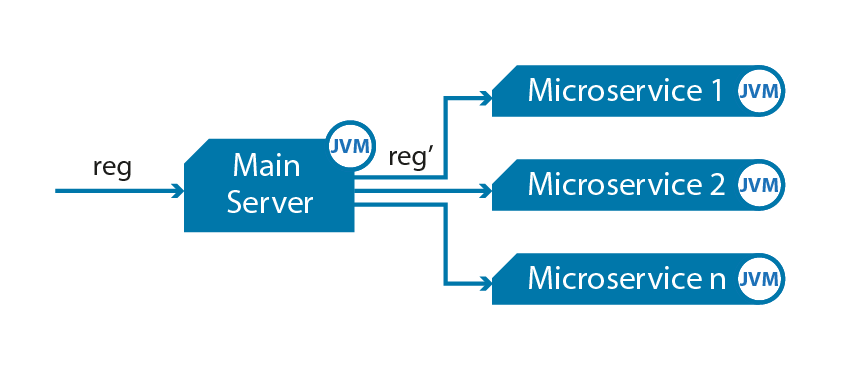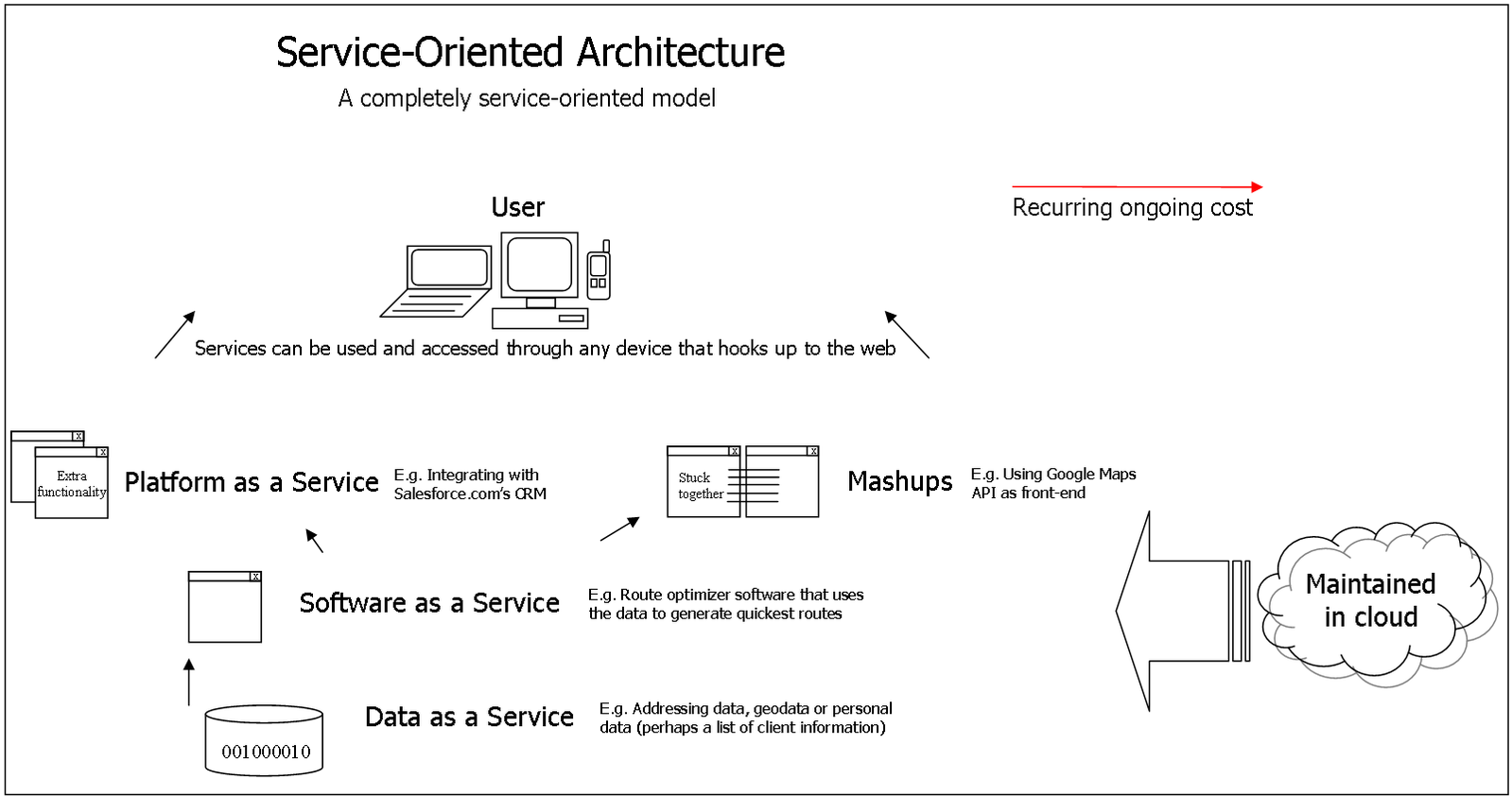Difference Between Microservices and SOA
With technology advancing at an unprecedented rate, it poses challenges for businesses in the IT domain to cope up with the rapidly changing trend. And with the increasing demand of highly scalable applications, the conventional monolithic architecture is becoming obsolete and is no longer useful anymore. After a certain point, monolithic applications can be difficult to scale because they are too large and complex to make changes fast and correctly. To overcome the limitations of the monolithic architecture, Microservices Architecture and Service-Oriented Architecture have come into play. They soon gained popularity as the basis to build distributed systems.
Both microservices and SOA architecture are somewhat related; both are based on distributed systems aimed at splitting applications into services. Both approaches have application modularity in common and they are independent of concrete technology. The term “Microservices” is relatively new, but the concept behind it have been around for a long time, even during the early day when SOA was popular. Microservices are a modularization concept based on dividing large systems into smaller modules in order to facilitate the implementation and development of the software. SOA is yet another architecture based on modularization of software and shares more or less similar set of functions. However, both have their fair share of differences.

What is Microservices?
Microservices are a software architectural pattern that structures an application as a collection of small, independent processes to be used for specific business capability. Microservices is an approach to modularization of software designed to address specific fine-grained business functionality. It uses modules that run as distinct processes, meaning it fosters building a software application as a suite of independent services. In simple terms, Microservices architecture is all about diving an application or system into smaller, independent parts based on the principle of single responsibility. Single responsibility means each microservice has a set of well-defined features and should run on a separate process as a service.

Service-Oriented Architecture
Service-Oriented Architecture (SOA) is a software design pattern or approach to build application architecture based on services. Like microservices, applications in SOA are built based on services. It is a software architectural concept that defines the use of loosely-coupled services to support the requirements of software users. Each service has a unique set of functionality in designing a concrete software architecture. The focus of a service-oriented architecture is on the functional infrastructure and its business services, rather than on the technical infrastructure and its services. SOA is well suited to dealing with complex distributed systems. It allows entities that would require certain distributed capabilities to locate and make use of those capabilities. The idea is to distribute the company’s entire IT infrastructure into separate services.
Difference between Microservices and SOA
Architecture
– While both the architectural styles are based on distributed systems and they aim at dividing applications into services, each service has a different responsibility in both the architectural patterns. Microservices architecture is about developing a single application as a suite of small and independent services that are developed and deployed independently. SOA, on the other hand, is a wider concept, so the scope for problems with this style is larger. Unlike microservices, SOA comprises loosely-coupled application services that communicate via a common communication mechanism.
Data Storage
– Microservices have independent data storage meaning each microservice will be an independent service and does not share any common data storage among themselves. Data storage brings its own set of pros and cons. The communication among microservices should only be done through a common set of protocols such as HTTP. In the SOA model, the services share the same data storage layer in the application. Services are loosely coupled in SOA and self-contained. The consumers are only concerned about the service interface and do not care about its implementation.
Flexibility
– As microservices are self-contained, any change to a microservice can be tested and deployed independently. This makes it easy for you to concentrate on the business capability of a single microservice rather than thinking about the whole application. So, changes required for new features are limited to individual microservices. SOA, on the other hand, has greater organizational flexibility and implementations are environment-specific, so that they can effectively respond to a changing business environment. SOA distributes the logic to the portal and the individual services.
Fault Tolerance
– SOA enables integration of existing software components from different sources faster making fault tolerance feasible. Fault tolerance is the key to large distributed systems. It minimizes the impact of modifications and failures on the system landscape as a whole. Microservices, on the other hand, are more prone to the failures due to the proliferation of services and their inter-service network communications. A given microservice application is a collection of independent, autonomous services and a failure of one or more than one services should not bring the entire application down.
Microservices vs. SOA: Comparison Chart

Summary of Microservices vs. SOA
In a nutshell, microservices focus on isolation, meaning services are independent of each other and changes required for new features are limited to individual microservices. In short, microservices represent architecture for an individual system. SOA, on the other hand, defines how a multitude of systems interact within the enterprise IT. Unlike microservices, the focus of a service-oriented architecture is on the functional infrastructure and its business services, rather than on the technical infrastructure and its services.
- Difference Between Caucus and Primary - June 18, 2024
- Difference Between PPO and POS - May 30, 2024
- Difference Between RFID and NFC - May 28, 2024
Search DifferenceBetween.net :
Leave a Response
References :
[0]Wolff, Eberhard. Microservices: Flexible Software Architecture. Boston, Massachusetts: Addison-Wesley, 2016. Print
[1]Indrasiri, Kasun and Prabath Siriwardena. Microservices for the Enterprise: Designing, Developing, and Deploying. New York: Apress, 2018. Print
[2]Mitra, Ronnie, et al. Microservice Architecture: Aligning Principles, Practices, and Culture. Sebastopol, California: O'Reilly Media, 2016. Print
[3]Josuttis, Nicolai M. SOA in Practice: The Art of Distributed System Design. Sebastopol, California: O'Reilly Media, 2007. Print
[4]Image credit: https://commons.wikimedia.org/wiki/File:SOA_Detailed_Diagram.png
[5]Image credit: https://commons.wikimedia.org/wiki/File:JLupin_wiki_fig3.png
